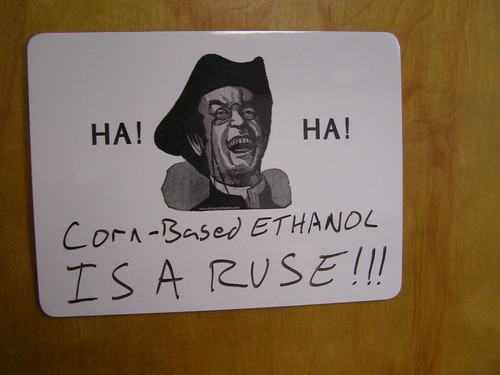(Source: San Jose Mercury news & Calif. ARB)
SACRAMENTO—California air regulators are taking another step to reduce greenhouse gas emissions, considering first-in-the nation standards to require the use of so-called low-carbon fuels.
The California Air Resources Board, which will debate the standards Thursday, considers the regulation a framework for a potential national policy advocated by President Barack Obama on the campaign trail last year. Democrats have included a goal for low-carbon fuels in the latest climate bill they have introduced in Congress.
“We see this as a model for the rest of the country and the world to follow,” said Air Resources Board member Dan Sperling, a transportation expert and professor at the University of California, Davis.
The proposed regulation calls for reducing the carbon content in California’s transportation fuels 10 percent by 2020, but representatives of the petroleum and ethanol industries are objecting to how the state proposes to achieve that.
California oil producers and refiners are skeptical that cleaner fuels and vehicles powered by hydrogen and natural gas will be available in time to meet the new standards. They are asking the Air Resources Board to delay a decision until next year.
“This is the most transforming fuel regulation we’ve ever done,” said Kathy Rehis-Boyd, executive vice president of the Western States Petroleum Association. “We think there’s still more homework to do on this. There’s a lot of uncertainty.”
“We have a long history of what I call ‘fuel du jour’ approaches,” Sperling said. “What we need is a broad policy framework that doesn’t pick winners.”
The Air Resources Board is not just targeting the emissions of the fuel once it is burned in a vehicle. It also wants to account for all carbon emissions related to the production of the fuel.
For example, refineries could choose to stop buying a heavy crude oil extracted from Canadian oil sands, which takes more energy to convert into gasoline. But accounting for emissions during the entire production cycle of a fuel also would discourage certain fuels from being used in California.
Corn-based ethanol, for example, burns cleanly in a car engine. But making it can take a heavy toll on the environment: Massive tracts of land must be cleared, which requires fuel-powered tractors, then coal- or natural gas-fired plants convert the corn into fuel and petroleum is used to transport the end product to distant markets.
The board’s attempt to estimate emissions from such indirect land use has sparked debate in California and elsewhere.
More than 100 scientists—including those from the National Academy of Engineering, Sandia National Laboratories and a host of universities—petitioned the California Air Resources Board to rethink its position.
They said regulators are acting prematurely because scientists remain divided over how best to calculate carbon emissions tied to biofuels. They also criticized the board for penalizing biofuels by not applying the same standard to oil and natural gas production, although the air board does factor in the emissions tied to drilling, transporting and refining oil and gas.
Click here to read the entire article. For those interested in learning more, visit the California ARB website on this issue. Shown below is the45-day Notice of Public Hearing to Consider Adoption of a Proposed Regulation to Implement the Low Carbon Fuel Standard that is made public on the agency website.





